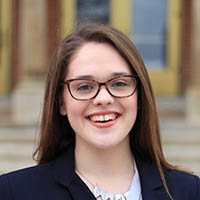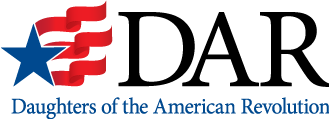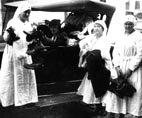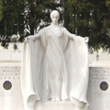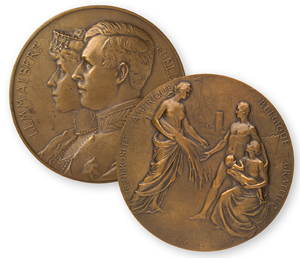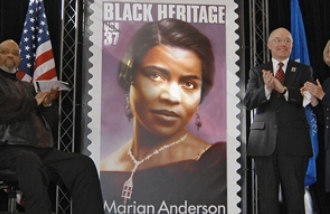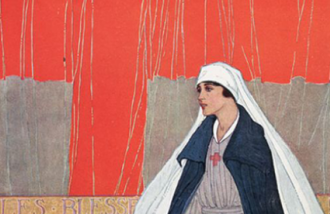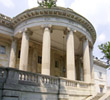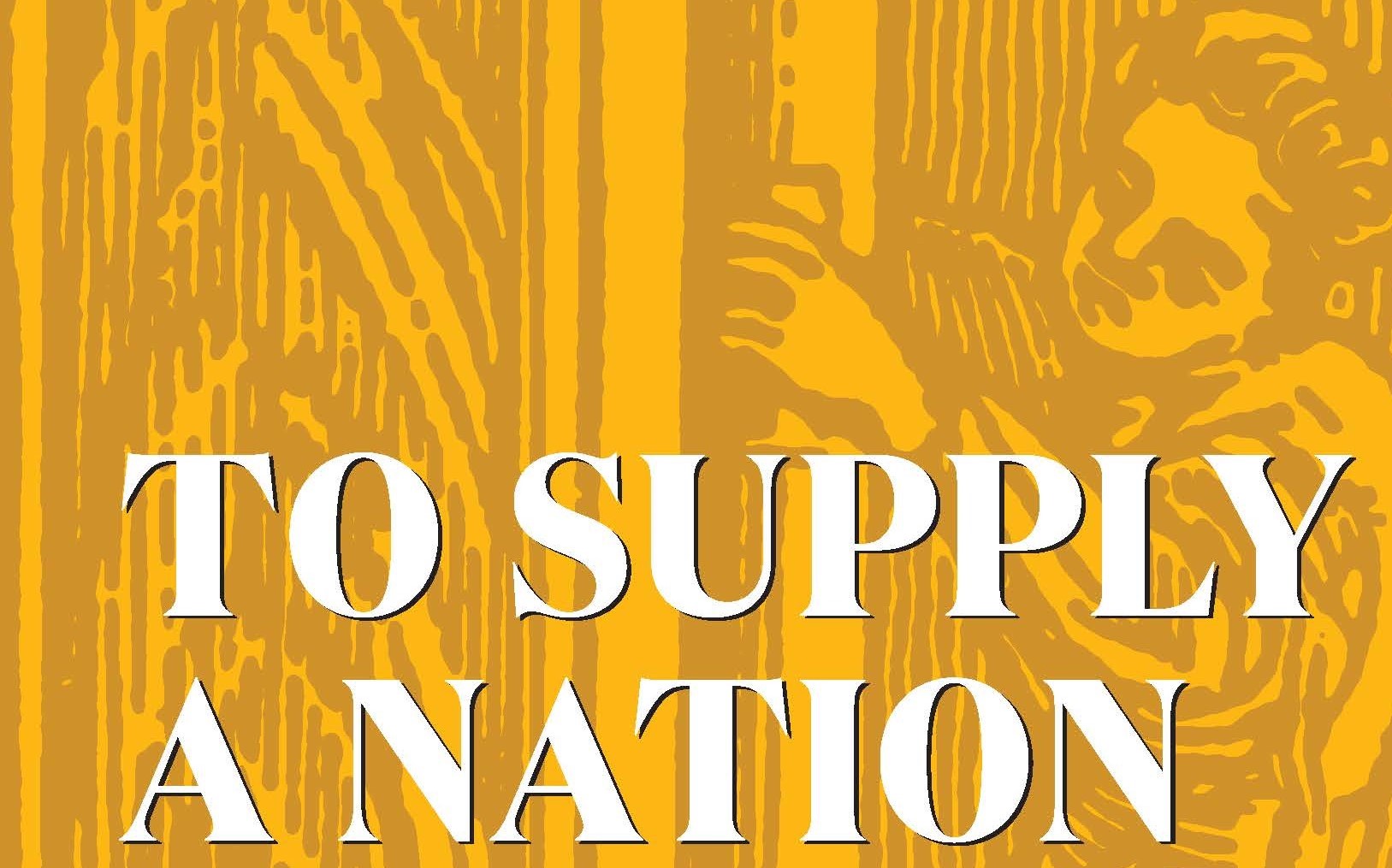
Friday, November 4, 2022
9am – 4pm
This year’s theme will analyze the effects of early consumerism as introduced in the DAR Museum’s exhibit, To Supply a Nation: Origins and Impacts of Everyday Things. This exhibit explores the origins and impacts of household goods in the 18th and 19th centuries. Listen to a full day of speakers and tour the exhibit with William Strollo, Curator of Exhibitions.
Register here. Virtual and in-person options available. Lunch provided with in-person registration
Sessions:
“Illuminating Racialized Surveillance: The Double Lives of the Candlelight and the Silhouette in the 18th and 19th Century”
This session will look to the technology of silhouette portraiture and the candle lantern in order to illustrate how common household objects, seemingly innocent innovations, have multiple lives once race enters the frame. While silhouettes of White Americans circulated as domestic heirlooms, viewed in maple frames, and lovingly arranged in albums, silhouettes of Black subjects lacked such compensating externalities and instead were displayed at auction blocks, reproduced as runaway slave advertisements, and shown at pseudoscientific lecterns. By looking at examples of silhouette portraits by well-known cutter Auguste Edouart (Emma Catherine Embury) in juxtaposition to Flora’s Portrait, and the runaway slave advertisement of Sancho, it is crucial to recognize how the specific externalities of the silhouette’s production became influential in terms of how the objects were valued and understood.
Milly Cai is an art historian and curator based in Brooklyn, New York. She is currently an MA candidate at the Institute of Fine Arts, NYU. Cai’s research focuses on the intersection of contemporary surveillance technologies, methods of policing, and photography. Cai is the former Associate Director of Ippodo Gallery, NY, and has curated exhibitions for Spring Break NYC, Art Basel, and Design Miami. Photo by Grae Bowen, 2022
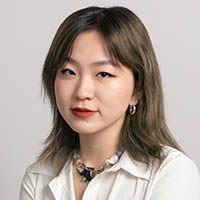
“Sugar, Slavery, and the White House China”
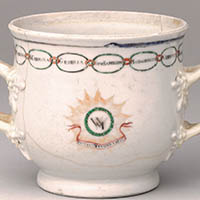 Upon stepping into the White House China Room, visitors encounter tableware from nearly every presidential administration. Tucked into one of the impressive glass display cases is a small, porcelain sugar bowl. To many viewers, the bowl may seem like an ordinary piece of White House tableware, but a closer look at this artifact illuminates many layers of history that span the Atlantic World and connect international merchants, enslaved laborers, American consumers, and George and Martha Washington. This presentation will use material culture to analyze this artifact from its production in the late eighteenth century to the present day.
Upon stepping into the White House China Room, visitors encounter tableware from nearly every presidential administration. Tucked into one of the impressive glass display cases is a small, porcelain sugar bowl. To many viewers, the bowl may seem like an ordinary piece of White House tableware, but a closer look at this artifact illuminates many layers of history that span the Atlantic World and connect international merchants, enslaved laborers, American consumers, and George and Martha Washington. This presentation will use material culture to analyze this artifact from its production in the late eighteenth century to the present day.
Photo: Sugar Bowl, Bruce White for White House Historical Association
Sarah Fling started at the White House Historical Association in 2019 as a graduate public history fellow before joining as a historian in 2021. Her research focuses on free and enslaved workers, the first ladies, and the White House Collection. Sarah’s previous work experience includes internships at historic sites such as George Washington’s Mount Vernon and the Frick Pittsburgh. She received her bachelor’s degree in History from the University of Pittsburgh and her master’s in Public History from American University. Sarah is originally from York, Pennsylvania.
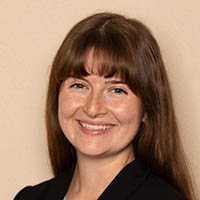
“Rubber and the History of Technology in the Early American Republic”
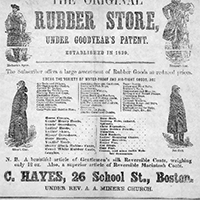
Many historians only acknowledge the significance of rubber in the context of the automobile revolution, but by the 1850s rubber was already used to make goods across a broad range of industries. In many of these applications, there was no alternative material that combined the flexibility, elasticity, impermeability, and abrasion resistance of rubber. This global industry of the 1850s had its origin in transatlantic scientific and industrial networks which developed from 1780 to the 1830s. Science, technology, institutions, business practices, and the industry-knowledge of historical actors evolved together to create new paradigms of industrial research and manufacturing practice. Probing patent records, court proceedings, the writings of inventors and businessmen, and the material culture of rubber manufacturing in the early American Republic, this presentation will shed new light on the history of an important and versatile commodity, while uncovering the process of invention in early America.
Dr. Daniel Graham is an historian of science, technology, and medicine. He has taught at Catholic University, Hood College, Florida Gulf Coast University, and Slippery Rock University. Currently, Graham is pursuing his research on the intersections between empire, science and technology, and business practices through a fellowship through the Beckman Center for the History of Chemistry at the Science History Institute.
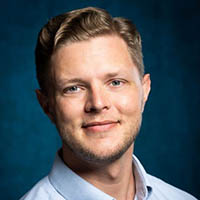
“Robert Beverley of Virginia and his London Clothiers 1762-1775”
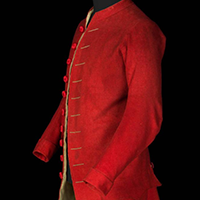
This session will examine Robert Beverley as a typical wealthy global consumer of clothing through his surviving correspondence. The over three-thousand-mile distance and nearly six-to-eight-week travel time between Virginia and London, did not stop Beverley from ordering plain work a day clothing to fine and fancy coats, waistcoats, and breeches. The letters reveal a relationship between London tailor Christopher Scot who worked in Stanhope Street near Clare Market who made most of Beverley’s clothing despite his constant bickering about quality. Scot’s death forced a sudden shift to another tailoring firm named Mason and Smither, around the corner in Arundel Street, along the Strand, who continued making his clothing until the outbreak of the American War for Independence. Beverley’s letters also connect to many other tradesmen in London such a Peter Pope, a hosier in ThreadneedleStreet and leather breeches maker Rice Jones in James Street who both shipped items back to Virginia for Beverley to wear.
Photo: Coat, New England, ca.1770, wool plain weave fulled and napped "broadcloth"; twill worsted "shalloon" lining; tabby linen lining center back. Pocket flap lined with twill worsted; sleeves lined with tabby linen; right lower pocket is linen; left pocket is leather; inside pocket on left breast is linen, with broadcloth welt, accession #1953-59, image #D2020-JBC-0812-0006, The Colonial Williamsburg Foundation, Museum Purchase
Neal T. Hurst is the Associate Curator of Costume and Textiles at the Colonial Williamsburg Foundation. He worked for seven years in Williamsburg's Historic Trades Department earning his Journeyman’s Papers as a tailor. He received his BA in history from the College of William and Mary and his MA from the Winterthur Program in American Material Culture. Hurst was the assistant curator for the inaugural exhibition for the Museum of the American Revolution in Philadelphia and in 2016 returned to Colonial Williamsburg.
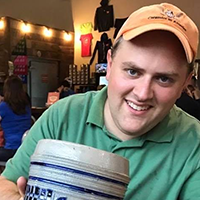
“Picturing the Walls: Maps and Prints in the early Chesapeake”
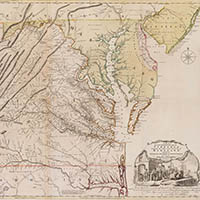
Writing from Williamsburg, Virginia in 1717, planter John Custis requested his London agent to send him several dozen “good Comicall diverting prints to hang in y.e passage of my house.” He made sure to add “let them bee good of y.e sort, or send none.” In the 1730s, a map advertised in the Virginia Gazette was “Useful, but Ornamental, for Gentlemen’s Halls, Parlours, or Stair-cases.” How did consumers these objects in the Chesapeake understand and enact prescribed ideas about where and how they should be displayed in their homes? What made a print suitable for a passage or a parlor? Employing references to graphics from inventories, newspapers, letters, account records, diaries, and surviving examples, this talk will explore the consumption, use, display, and function these objects in the Chesapeake region.
Photo : A MAP of the most INHABITED part of VIRGINIA containing the whole PROVINCE of MARYLAND with Part of PENSILVANIA, NEW JERSEY AND NORTH CAROLINA, Joshua Fry & Peter Jefferson, England, London, 1768; first published ca. 1753, Art Museums of Colonial Williamsburg, 1968-11
Katie McKinney is the Margaret Beck Pritchard Associate Curator of Maps and Prints at Colonial Williamsburg where she oversees the museums' print, map, and natural history collections. She holds a master’s degree from the Winterthur Program in American Material Culture at the University of Delaware (2015) and a BA in art history and history from James Madison University (2011). Katie has previously held positions at Monticello and Sotheby’s and has participated in the Historic Deerfield Summer Fellowship, The Classical Institute of the South’s Summer Field Study, and the Museum of Early Southern Decorative Arts Summer Institute. She co-curated the exhibit “Promoting America: Maps of the Colonies and New Republic” which is currently on view at the Art Museums of Colonial Williamsburg.
“Exports and Embargoes: Trading with the Enemy in Colonial America”
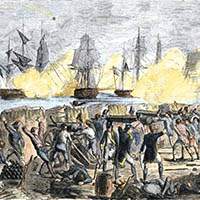
The American colonies, which were under British control in the eighteenth century, rose up in rebellion against the British Empire in 1775. This rebellion, and eventual revolution, was preceded by import taxes, trade embargoes, and boycotts. However, throughout much of the conflict and immediately after it ended in 1783, trade between Britain and the United States still took place. This trade, remarkably, also consisted of British made goods specifically for the American market; touting American politics, motifs, and mottos on creamware, textiles, and more. But how could British manufacturers conduct business with traitorous colonists, and vice versa? Several factors contributed to this vibrant trading between enemies. To better understand the social, political, and economic factors at play, I will examine the pre-revolution economic history of British-American trade and then look to the objects themselves to discuss how such items came to be produced and exported. I will focus specifically on transfer printed creamware and textiles made in Britain and exported to America between 1750-1800, drawing from the Winterthur Museum, the Daughters of the American Revolution Museum, and more. And while economic factors play the largest role, the social factors at play are nearly just as important in facilitating the production and trade of special made goods for the American colonies.
Photo: British attack Fort Moultrie in the harbor of Charleston, South Carolina 1776. Hand-colored woodcut
Kathryn Prinkey is an emerging museum professional and intends to work in curation. She is currently working on her Master’s in Museum Studies at George Washington University. She is new to the decorative arts as her background centers on decolonization and ethics in museums. In 2021 she earned a Master’s in Islamic and Middle Eastern Studies from Washington University in St. Louis and in 2019 graduated from Washington & Jefferson College in Pennsylvania. Katie was first published earlier this year. Her article on cultural colonialism at the Museum of the Bible appeared in The Coalition of Master’s Scholars on Material Culture. Her presentation today was inspired by a recent course focused on early modern oceanic trade.
